
Reston residents will soon get a chance to share their thoughts on a proposed name change for the Shadowood Recreation Area.
Reston Association plans to host a town hall meeting in early May after its Board of Directors voted last week to defer the initial date of April 15.
Area residents are seeking the name change to the recreational area, which includes a swimming pool and tennis courts, in order to clarify that the pool is open to all RA members, not just Shadowood Condominium residents.
With the results of a board election set to be revealed this month, RA board president John Farrell said at a meeting last Thursday (March 28) that conducting the town hall while new members transition to the board would be an “uncomfortable moment.”
The delay, which was approved by the majority of the board, was criticized by board member Margaret Perry, who noted that neighbors have been seeking the name change for several years.
“The Shadowood neighbors have been asking for that name change to happen for years and so, I think to continuously put it off and put it off is at this point once again ignoring member requests to at least go in and see what can be done and get it moving,” she said.
Farrell emphasized that a similar request to change the name of the facilities at 2201 Springwood Drive was ultimately voted down in 2011.
“This group of people who are interested in this have already had their day in court. That doesn’t mean I’m not going to give them another one,” Farrell said, adding that the date change would delay the timeline by three weeks.
In addition to the town hall workshop, RA plans to launch an online survey to gauge feedback on the name change.
RA CEO Mac Cummins said the hope is to line up the proposed name change — if approved — with the reopening of the Shadowood pool this year. The renovation project shifted to a new phase last fall and is expected to be complete in time for the upcoming summer pool season.
RA is also exploring a name change for Lake Audubon, but a meeting on the proposal was unexpectedly cut short due to a health emergency.

The Town of Vienna’s future library will bear a name with close ties to its past.
Fairfax County Public Library’s Board of Trustees unanimously approved “Vienna-Carter” as the new name for Patrick Henry Library at its meeting on Wednesday (Feb. 14). The name change will officially take effect once the library reopens after an expansion project that’s expected to start later this year and finish in fall 2026.
The vote inspired applause at the back of the George Mason Regional Library meeting room where the board convened. Among those clapping were Hoyt and Dee Dee Carter, a grandson and cousin, respectively, of Patrick Henry Library’s new namesakes, William and Lillian Carter.
“I’m very thrilled,” Dee Dee Carter said after the meeting adjourned. “I’m elated because it was unanimous. Nobody did a pushback, and I’m glad they’re in favor of it.”
Aware of the upcoming renovation, the Carters, who still live in Vienna, proposed last year that Patrick Henry Library be renamed after their family, who were instrumental in getting Fairfax County to integrate the facility when it launched in 1962.
Before Patrick Henry was established, Vienna’s only library was a one-room building on Maple Avenue that only served white residents. One day in the 1950s, the Vienna Library Association’s board of trustees even came to the Carters’ home and took back books that a white woman had checked out for their children, including Hoyt Carter’s father.
That incident spurred the Carters to start an informal “Friends of the Library” group in 1958 that met in their living room, according to a family story recounted in Christopher Barbuschak and Suzanne LaPierre’s book “Desegregation in Northern Virginia Libraries.”
With an interracial membership that included Kenton Kilmer, the son of poet Joyce Kilmer, the friends’ group successfully desegregated Vienna’s library, overcoming the opposition of the library association’s president to revise its charter to allow all patrons regardless of race.
Dee Dee Carter says one of her cousins, Sharon Honesty, was one of the first African American patrons to use Patrick Henry when it opened in Vienna’s Maple Avenue Shopping Center in 1962. The library moved to its current site at 101 Maple Avenue East in 1971.
“We were talking about Blacks being able to go in and use the library and use books from the library, so I feel that it’s a wonder to have this now happen,” Hoyt Carter said of Patrick Henry getting renamed after his grandparents.
Though the vote was unanimous, some board members reported getting questions and emails asking why the name change was being considered.
While the renaming wasn’t subject to a public hearing, FCPL Director Jessica Hudson said community members had several opportunities to weigh in at board meetings, including before the board approved an update to its facility naming policy last November.
The change had gotten the support of Hunter Mill District Supervisor Walter Alcorn and some Vienna Town Council members, though the council didn’t take an official stance, according to FCPL Board Chair Brian Engler.
Dee Dee Carter told FFXnow that she hasn’t heard anyone object to the new name, which was initially proposed to be “Carter-Vienna.” FCPL’s policy requires library names to reference their geographical location, and the board ultimately decided that the location should go first.
Suzanne Levy, the board’s vice chair and Fairfax City representative, expressed hope that the renaming will draw attention to the library system’s history.
“We’re not hiding what the county used to do,” she said. “It opens discussion and shows that we’re moving forward.”
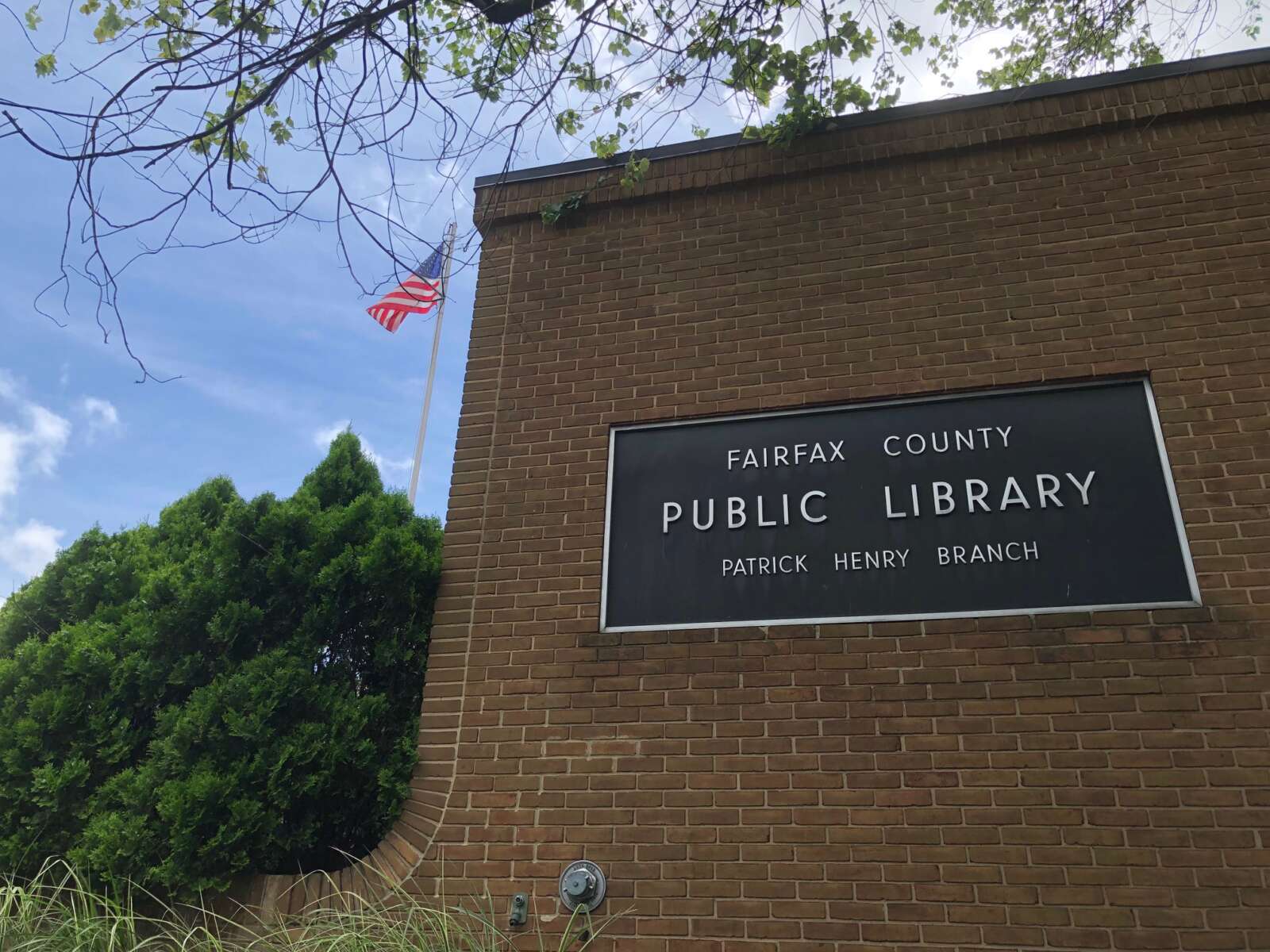
A new look could come with a new name for Patrick Henry Library.
With a major renovation on the horizon, the Fairfax County Public Library’s board of trustees is set to vote next Wednesday (Feb. 14) on whether to rename the Vienna facility after William and Lillian Carter, who co-founded the nonprofit friends’ group that has supported the library for over half a century.
Living members of the Carter family requested the name change last year as a recognition of their ancestors’ efforts to ensure Patrick Henry would be integrated when it launched in 1962, according to Library Board Chair and Braddock District Trustee Brian Engler.
“Mr. Carter was a founding member of the nonprofit Friends of the Library group in Vienna, which advocated for a County library facility within the Town to serve all residents,” Engler told FFXnow. “At that time, library services were only available to white residents. After receiving the inquiry, the Library Board first reviewed its policies regarding facility naming conventions and is now at a point where it can have full board discussion on the request.”
The request came to the board of trustees on Sept. 13, 2023, prompting a re-consideration of FCPL’s policy for naming facilities, according to the board packet for next week’s meeting, which will take place at 7 p.m. at George Mason Regional Library (7001 Little River Turnpike) in Annandale.
Previously updated in 2020, the existing policy permitted renaming proposals from residents of a library’s service area “if the benefits of the name change outweigh the costs such a name change could generate.” However, the new name had to reflect the library’s geographic location.
The board approved a revision on Nov. 8 that added the option for libraries to “also include the name of a group or individual, living or deceased, who has made a significant contribution” to FCPL as a whole or to that individual branch. A reference to the branch’s location must still be included.
As a result, FCPL staff are recommending that Patrick Henry be renamed the “Carter-Vienna Library” after it’s rebuilt.
Vienna’s first public library operated out of a one-room building at 101 Maple Avenue East from 1897 to 1962. Spurred by the advocacy of the Friends of Vienna Library group that the Carters helped found, Fairfax County started Patrick Henry Library as a shopping center storefront before its current building opened in 1971.
The original library was relocated to 164 Mill Street NE in 1969 and has been preserved as a museum run by Historic Vienna Inc.
Last renovated in 1995, the Patrick Henry Library building is now nearing the end of its usable life, according to FCPL. The planned overhaul will pair an approximately 18,000-square-foot, one-story library with a 209-space, three-level parking garage partially funded by the Town of Vienna.
According to the board’s Feb. 14 agenda, county staff currently anticipate construction on the project to begin this fall or winter, putting the new library on track to open in fall 2026.
“The County has additionally committed to opening a temporary library space within the Town of Vienna to continue providing resident services during the demolition and construction period,” FCPL staff wrote.
Given its eventual demolition, staff recommended that Patrick Henry Library’s name change, if approved, not take effect until the new building opens.
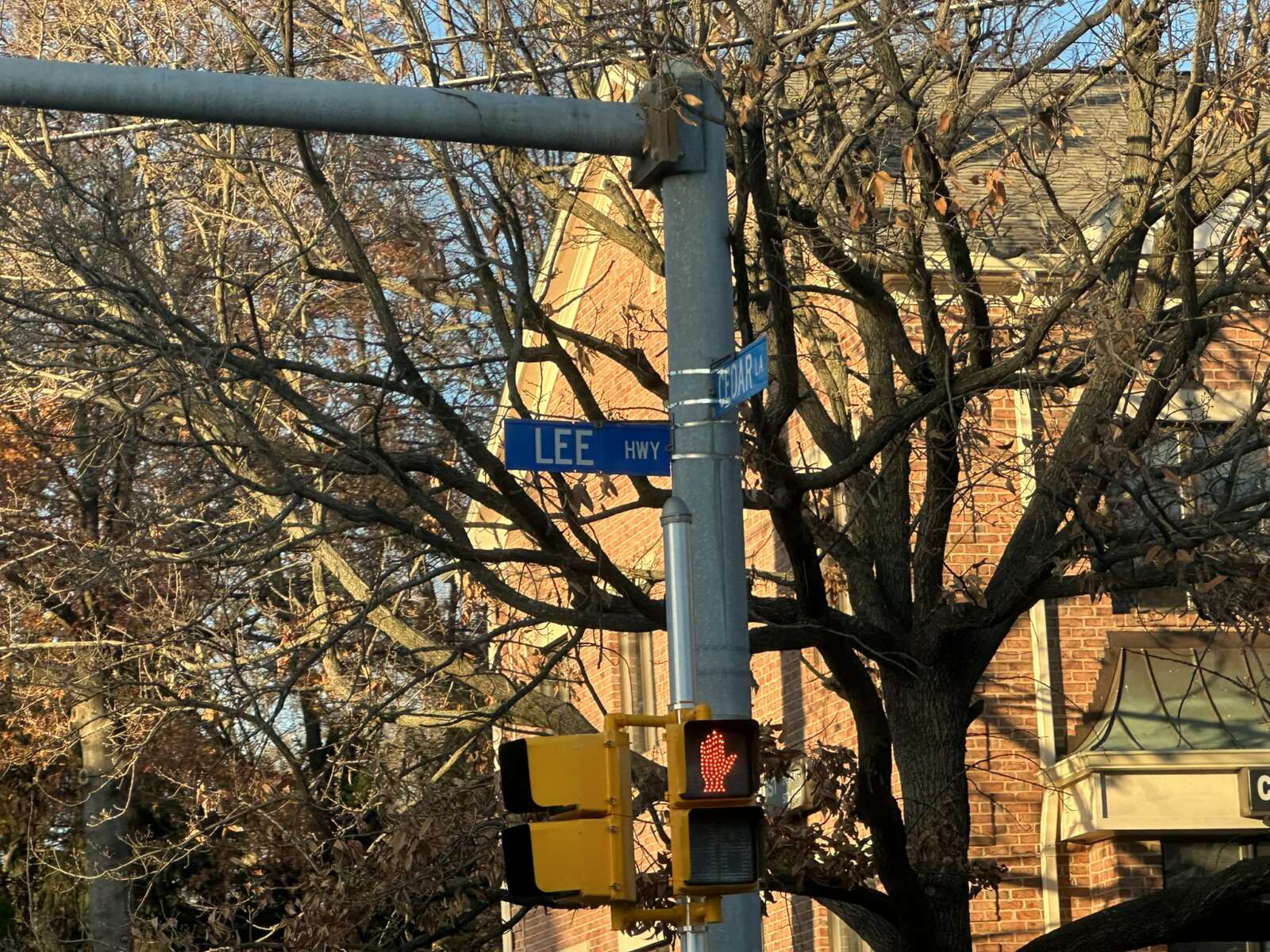
Officially, Fairfax County doesn’t have a Lee Highway or Lee-Jackson Memorial Highway anymore, but months after the names were dropped, they can still be seen on street signs throughout both corridors.
By the end of this month, that should no longer be the case — at least for smaller signs, the Fairfax County Department of Transportation says. A contractor is replacing the small blue signs at street corners with ones identifying the roadways as Route 29 and Route 50, respectively.
“This work is underway, and we anticipate this work to be complete by the end of November,” FCDOT Head of Communications Freddy Serrano told FFXnow.
The process of replacing larger, overhead directional signs, however, isn’t expected to begin until next year.
Getting those signs made and installed will be the Virginia Department of Transportation’s responsibility, though the county is covering all of the costs. A VDOT spokesperson says the department hopes to finalize an agreement with a contractor by the end of this year.
“It will involve 110 signs and it should take about two years to complete from the start of the contract that is anticipated to start in Jan. 2024,” VDOT said by email.
According to Serrano, a preliminary schedule from VDOT estimates that the overhead sign replacements will be finished by the end of 2025.
The Fairfax County Board of Supervisors voted on Sept. 13, 2022 to stop referring to routes 29 and 50 as Lee and Lee-Jackson Memorial, names adopted in the early 20th century as nods to Confederate generals Robert E. Lee and Thomas “Stonewall” Jackson.
Instead of giving the roadways entirely new names, as Arlington County did with its Route 29 segment in 2021, the board opted to use the route numbers to reduce confusion and the cost of new street signs. FCDOT staff previously said changing the signs would be more challenging for longer names.
At the time of the vote, county staff estimated that the sign updates would cost about $1.4 million. It cost about $46,000 for FCDOT’s contractor to fabricate and install the corner street signs, according to Serrano.
“Most of the costs of the sign replacement will be VDOT’s replacement of the larger overhead signs,” he said. “FCDOT will not have an updated cost estimate for that portion of the sign replacement until VDOT begins their preliminary design.”
County staff estimated it would take another $1.5 million to fund grants to help affected property owners cover expenses for updating business licenses, land records and other documents, as recommended by the Confederate Names Task Force that reviewed the proposed renamings.
On its website, FCDOT says the county “is developing” a financial assistance program, but Serrano confirmed to FFXnow that “the proposed grant program for businesses has not been approved at this time.”
The county updated addresses in its records to reflect the name changes, including for property taxes and voter registrations, on July 5.
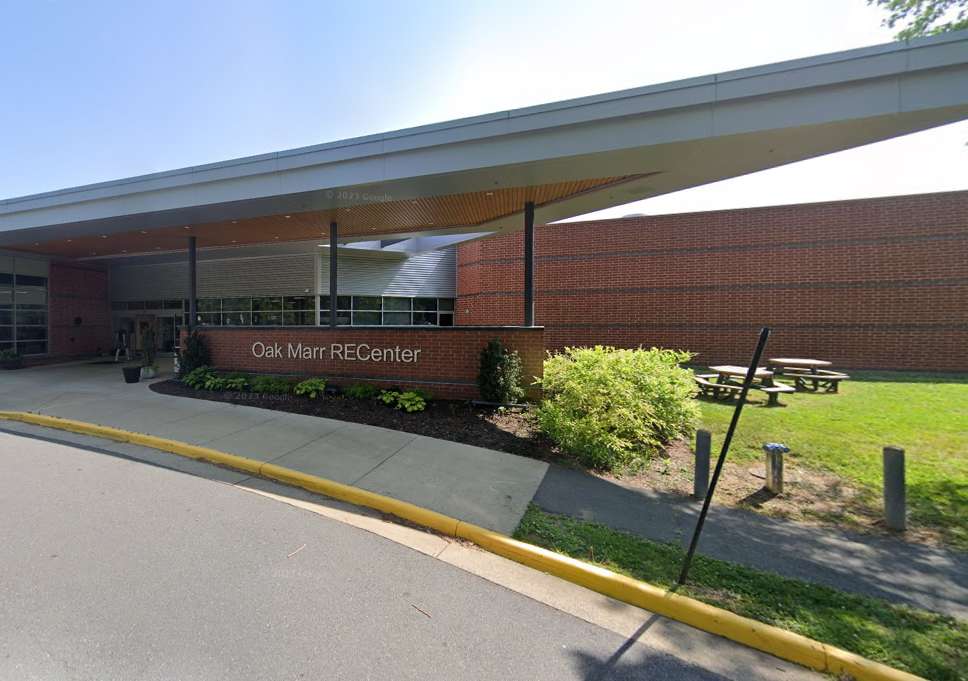
Fairfax County has shed another vestige of its Confederate past.
Oak Marr Park, which is home to the Oak Marr RECenter and Golf Center Complex, was renamed “Oakmont” earlier this month by the Fairfax County Park Authority board, which approved the change at its Nov. 8 meeting.
Located at 3200 Jermantown Road, the facilities were originally named after John Quincy Marr, a Warrenton militia captain who became the first Confederate soldier killed by the Union Army in the Civil War.
“The elimination of ‘Marr’ from the name of these park facilities follows the county’s pattern of moving away from names and titles that glorify the Confederacy,” the park authority said.
Until recently, Marr had also been recognized with a stone monument outside the old Fairfax County Courthouse at 4010 Chain Bridge Road. The monument was erected in 1904 by the Daughters of the Confederacy, marking the spot where he died on June 1, 1861, according to the FCPA.
The monument, which was accompanied by two howitzers and a state memorial marker, was the subject of a protest by the local advocacy group Reston Strong in June 2020, ultimately leading to their removal on Nov. 6, 2020.
Continuing a trend that began in 2017 with J.E.B. Stuart High School’s renaming as Justice High School, the Fairfax County History Commission conducted a review that identified more than 26,000 streets and landmarks in the county with names related to the Confederacy.
The most significant change to come out of that review and a subsequent Confederate Names Task Force has been the elimination of Lee Highway and Lee-Jackson Memorial Highway as the county’s names for routes 29 and 50. Those renamings took effect on July 5, though the street signs are still being changed.
FCPA staff initially proposed replacing Oak Marr with “Oak District,” noting that the site’s scope and amenities classify it as a district park, per the county’s comprehensive plan. But some board members wondered at an Oct. 25 meeting if the name might create confusion by implying the existence of an Oak magisterial district.
One board member admitted finding it “just a little plain.”
“You cannot incorporate Oakton into the park, because there’s already an Oakton Community Park, although some of the feedback I got indicated folks want Oakton in there somehow,” said Ken Quincy, who represents Oakton as the board’s Providence District member.
Before the board vote on Nov. 8, FCPA Executive Director Jai Cole credited Quincy with proposing Oakmont, noting that it “keeps the O and the M as Oak Marr and Flint Hill next to Oakmont.”
“Sounds like a great idea,” Mount Vernon District Representative Linwood Gorham said, while another board member suggested that it “sounds like a winery.”
An FCPA spokesperson says the park authority is in the process of transitioning its website and registration systems for camps, classes and other services to the new name, a process expected to finish by mid-November.
The signage at the affected facilities will likely take longer to get replaced.
“We do not currently have a set date for the installation of the physical signs at the Oakmont Rec Center and Golf Center as they need to be manufactured and transported to the site,” the spokesperson said. “We will hope to have a better idea of that timeframe within the coming weeks.”
Image via Google Maps
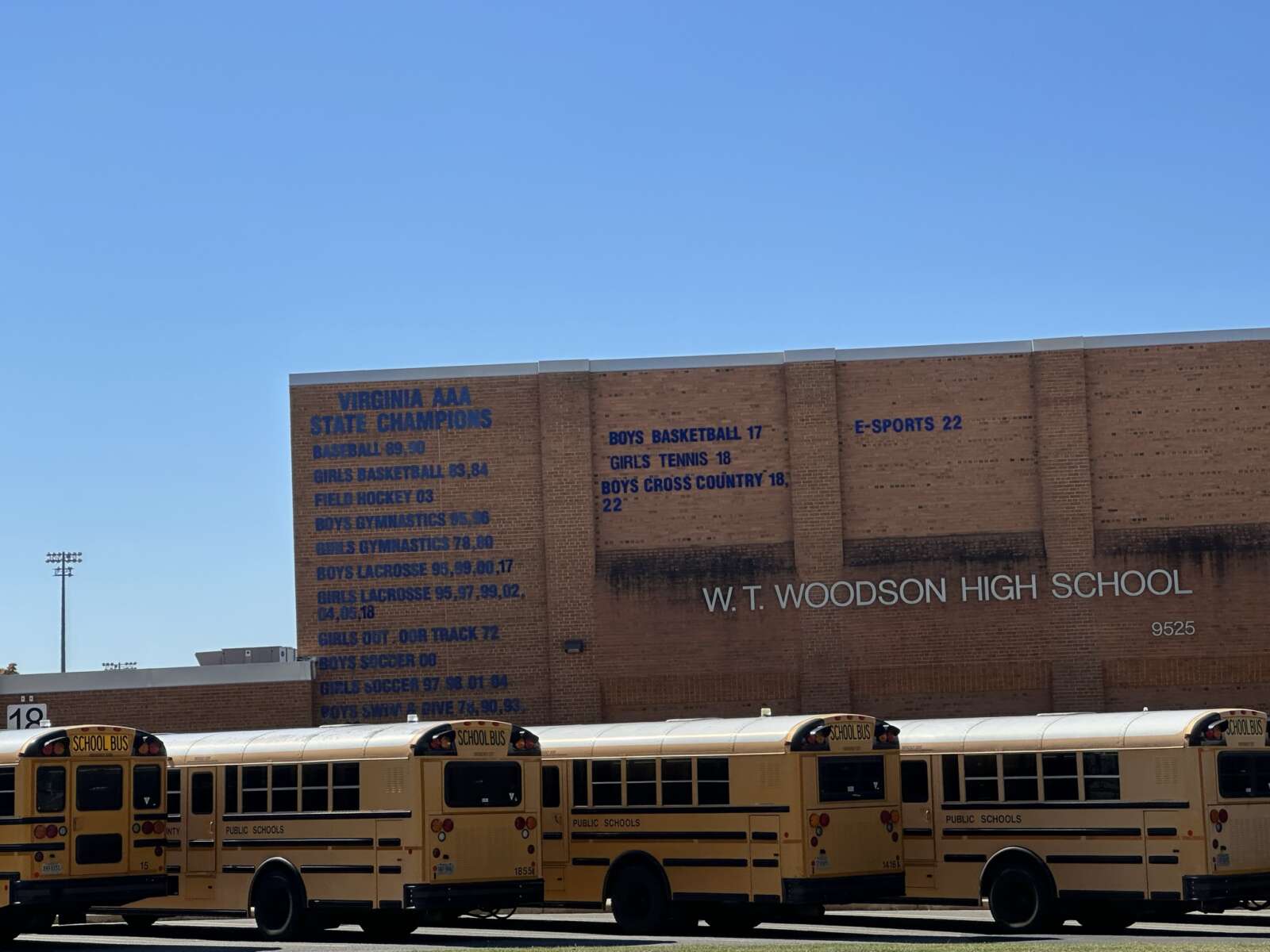
Fairfax County Public Schools is moving forward with a name change for W.T. Woodson High School.
The Fairfax County School Board voted 10-0 with two members absent on Thursday (Oct. 12) to drop former FCPS superintendent Wilber Tucker Woodson as the namesake of the 61-year-old school at 9525 Main Street outside Fairfax City.
The decision came after a month of public outreach in settings both formal — as in a public hearing on Oct. 10 — and informal, according to Braddock District School Board Representative Megan McLaughlin, who brought the issue to the full board last month.
“As a two-generation Woodson family, resident, homeowner, I continue to hold incredible pride for the school and to be a part of this community,” McLaughlin said. “But I also hope that, in our community conversations with each other and having spoken with leaders of our athletic boosters, with our [parent teacher student organization] leaders, with our student leaders, there has been quite an understanding that…as a board and a body, we know how important it is to have names on a building that can inspire all students, our staff and our community.”
As superintendent from 1929 to 1961, Woodson oversaw FCPS during a pivotal period of growth, but the recent discovery of a letter where he denounced integration gave momentum to calls for a name change, including from members of the Black Student Union, McLaughlin previously told FFXnow.
Opposition to renaming the school slightly outweighed support in an online survey that received 1,415 responses from Sept. 15 to noon on Oct. 12, according to a presentation that Superintendent Michelle Reid gave to the school board at Thursday’s meeting.
The balance was tipped mostly by self-identified alumni, some of them old enough to recall “positive interactions” with Woodson as he stayed present in the community after his retirement, McLaughlin said. Concerns included the potential cost and the “very strong connection” some felt to the existing name.
However, a majority of parents or caregivers and “other” respondents — a category that encompassed students, staff and miscellaneous community members — said they are “very likely” to support a name change, which was also favored by all but one of the handful of individuals who testified at the Oct. 10 public hearing.
In a statement read by at-large member Abrar Omeish since she had to leave before the renaming vote came up, the school board’s student representative Rida Karim, a junior at Woodson, said her discussions with fellow students indicated most of them support a change as “a crucial step towards fostering a more inclusive environment.”
“The potential of renaming W.T. Woodson represents a significant step towards justice and unity,” Karim said in the statement. “It serves as a reminder that our present should not be constrained or defined by the past, and a new school name would embody the strength of our community, our compassion and a belief in our commitment to providing for each student, irrespective of their background.”
After last week’s vote, FCPS has shifted into a second phase of community engagement to determine the school’s new name.
The school board proposed Carter G. Woodson, a Virginia native known as the “father of Black history.” More than 450 survey respondents said they would support that, but 369 people suggested alternatives, led by nine submissions of Little River High School in reference to the school’s location near Little River Turnpike.
An online form for feedback and questions on the renaming is now open through Nov. 1. FCPS will hold a community meeting at Woodson High School on Monday, Oct. 23 at 6:30 p.m. and a public hearing at 5:30 p.m. on Oct. 24. The school board is set to vote on the new name on Nov. 9.
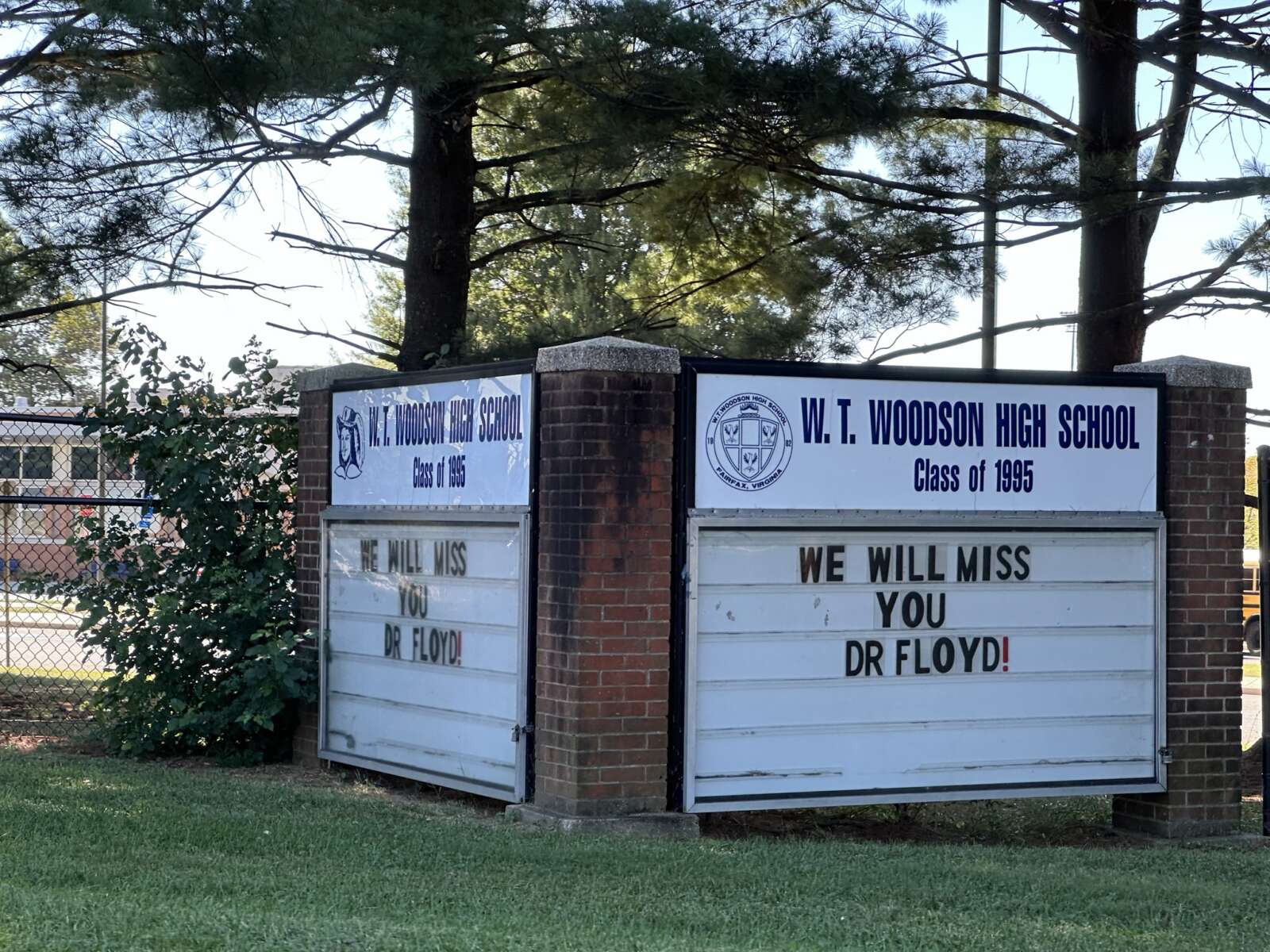
Woodson High School may soon drop “W.T.” from the beginning of its name.
The Fairfax County School Board launched a formal process last week to consider renaming the school just outside Fairfax City, adding it to a growing list of local institutions and landmarks whose monikers have been reevaluated in recent years.
Crediting students with advocating for change, the school board has suggested adopting scholar Dr. Carter G. Woodson — the “Father of Black History” — as the school’s namesake in place of Wilbur Tucker Woodson, whose long tenure as Fairfax County Public Schools superintendent included opposition to desegregation.
“I truly believe it will be and can be a remarkable moment for our county, for a solemn reckoning of our county and our Commonwealth’s segregationist past and a reconciliation and a healing,” said Braddock District School Board Representative Megan McLaughlin, who introduced the proposal at a work session on Sept. 12.
The proposal was co-sponsored by six other school board members, including all three at-large members and three other members — Karl Frisch (Providence), Ricardy Anderson (Mason) and Laura Jane Cohen (Springfield) — who also represent portions of the Woodson area.
Now serving over 2,400 students, Woodson was the largest school in Fairfax County and Virginia when it originally opened its doors in fall 1962 — just over a year after W.T. Woodson retired in June 1961, according to FCPS.
Appointed superintendent from 1929 to 1961, Woodson oversaw FCPS as it evolved from a smattering of small schoolhouses into one of the state’s largest districts, growth fueled by the county’s population boom following World War II.
When he died in 1983, a Washington Post obituary described Woodson as “a gradualist” who believed Black and white students should be integrated over time, starting with first graders, rather than all at once.
However, in a 1959 letter to a school board member, Woodson called desegregating schools “most unfair” because it would force “social adjustments to which so many parents strongly object.” In addition to fearing “social mixing,” he warned integration would reduce political and financial support for public schools.
According to McLaughlin, concerns about Woodson High School’s name have cropped up in the past, but it wasn’t given the same priority as schools with clear nods to the Confederacy, like J.E.B. Stuart (now Justice High School), Robert E. Lee (renamed after Rep. John Lewis) and Mosby Woods (now Mosaic Elementary School).
That changed when an FCPS staff member found the 1959 letter while researching the system’s history with segregation, confirming that Woodson’s resistance to integration reflected his personal beliefs, not just adherence to state policy.
“The school board may consider a change in the name of an existing school or facility to ensure an inclusive, respectful learning environment,” McLaughlin told FFXnow. “It’s not inclusive when you have the name of an individual on a building that we now have a document that shows that he believed in the merits of segregation.”
Noting that several of her family members have attended Woodson, including her husband, brothers and children, McLaughlin stressed her desire to approach the renaming process with “humility,” even as she hopes the community will support Carter G. Woodson as an alternate name. Read More
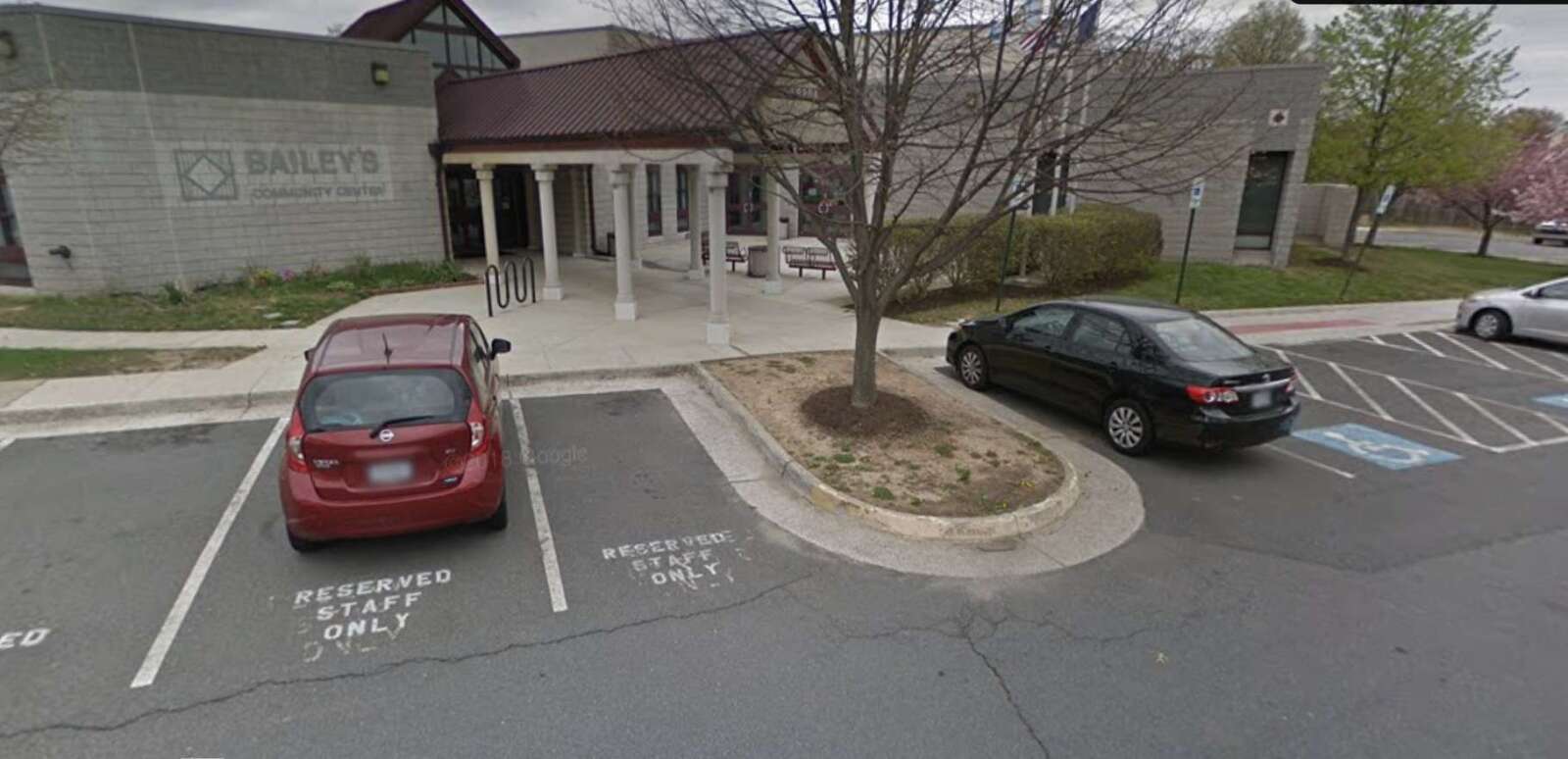
Fairfax County is considering renaming its community center in Bailey’s Crossroads after a mid-20th-century pillar of the Black community.
At a Board of Supervisors meeting yesterday (Tuesday), its first since July, retiring Mason District Supervisor Penny Gross proposed looking into renaming the decades-old Bailey’s Community Center after Minnie Peyton.
Peyton was the well-known matriarch of Springdale, a historically Black community in Bailey’s Crossroads that originated as a home to freedmen after the Civil War.
Peyton founded several local churches and donated land to the county, specifically for an elementary school for Black students. When the school was completed in 1956, per county tax records, Fairfax County was still segregating Black and white students.
Today, the land once occupied by the school is the site of Bailey’s Community Center and Higher Horizons Head Start Program, an early education facility founded in 1963.
Naming the community center after Peyton would be a fitting acknowledgment of her role in the area’s history, Gross said in a board matter.
The Springdale community in Bailey’s Crossroads had its beginnings as home to freedmen following the Civil War, and has nurtured hundreds, perhaps thousands, of families in the last century-and-a-half. As with many traditional Black communities, the residents erected a church and built a small elementary school to educate their children, but the neighborhood received few local services – no paved roads, no sidewalks, no public drinking water or wastewater infrastructure. There is a growing desire in the community to re-name the community center to honor Minnie Peyton and reflect its historic roots.
While advocating for the change, Gross acknowledged that “more research needs to be done” and requested that the Fairfax County History Commission “verify available documentation” before the switch.
Gross gave the commission a deadline of next summer to report its findings.
The Board of Supervisors approved the request unanimously, though no date or timeline was given on when the community center’s name might actually change.
This isn’t the only county community center to undergo a name change recently. In July, the Board officially approved renaming the Providence Community Center as the Jim Scott Community Center.
Scott was a former supervisor and represented the county in the Virginia House of Delegates for over two decades. He was most known for advocating for the state’s “motor voter” law, which allowed people to register to vote at DMVs, employment centers, and welfare offices. He died in 2017.
A renaming ceremony for the community center in Oakton will be held on Sept. 30.
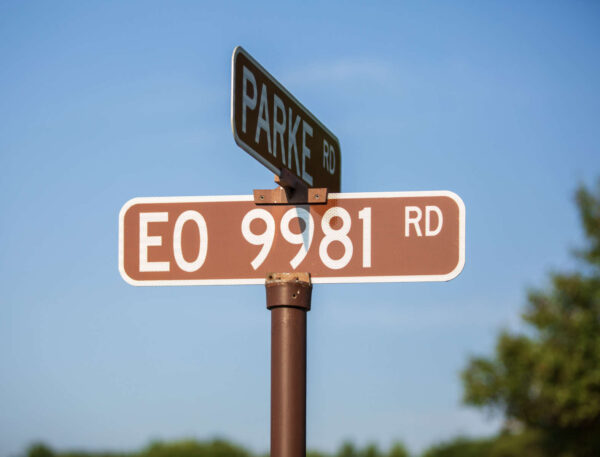
Fort Belvoir’s Lee Road is officially being renamed EO 9981 Road in a ceremony this morning (Wednesday).
The name change comes as a result of a 2022 recommendation made by the Congress-backed Naming Commission tasked with coming up with a plan to remove names, symbols, displays, and monuments that honor the Confederacy from all “Army assets.” That includes bases and roads.
Lee Road in Fort Belvoir, a U.S. Army installation, is named after Confederate General Robert E. Lee. But that will officially change when the road gets renamed after Executive Order 9981.
The order integrated the armed services and was signed into law by President Truman on July 26, 1948 — exactly 75 years ago to the day.
“The impact of EO 9981 cannot be overstated,” Fort Belvoir spokesperson Paul Lara told FFXnow. “By removing barriers based on race and fostering a merit-based system, it opened doors for countless men and women, regardless of their racial or ethnic background, to serve their country with dignity, honor, and equal opportunities. It set a powerful precedent for future civil rights advancements within the United States and inspired similar reforms in other sectors of society.”
The public ceremony will start at 10 a.m. today at Woodlawn Chapel (6050 Gorgas Road). Fairfax County Board of Supervisors Chairman Jeff McKay will present a proclamation recognizing EO 9981 to Col. Joseph Messina, who commands Fort Belvoir.
The ceremony will also include remarks from author and retired judge Rohulamin Quander, who is a descendant of enslaved servants under George Washington. The event will conclude with the unveiling of the new sign and refreshments.
While the recent effort to rename nine Army bases has gotten most of the attention, roads and buildings are also part of the directive. In the instance of Lee Road, Lara says the decision on the new name was left to Fort Belvoir leadership.
Leadership went with EO 9981 Road because of the order’s significance and because a concept was preferable to a person or place, which would have required significantly more vetting and approvals from the Secretary of the Army, Lara said. A concept, though, allows the renaming to happen quicker.
This won’t be the only Fort Belvoir road that will be renamed. Beauregard Road, Stuart Road, and Johnston Road are also slated for a change, per Lara.
“The possible names are still being decided, but we wanted to act on the 75th anniversary of the Executive Order for this first rededication,” Lara said.
As for Fort Belvoir itself, that name looks to be sticking around, despite ties to the plantation that once stood on the property and its history as the site of Confederate Memorial Day celebrations.
In a final report released last year, the Defense Department Naming Commission noted that it didn’t have the authority to move forward on the renaming of Fort Belvoir, but a change was recommended.
However, the Fairfax County History Commission expressed concerns with the report, citing a lack of transparency, potential historical inaccuracies, and the impact a change might have on telling the stories of enslaved people who lived on the plantation.
Lara confirmed there are “no current plans” at this time to rename Fort Belvoir.
The City of Falls Church has officially decided to reinvest in a 10-block commercial area that encompasses the largest Vietnamese shopping center on the East Coast.
On Monday, June 26, Falls Church City Council unanimously voted to approve the East End Small Area Plan, which proposes reinvestment into a series of commercial properties — including the historic Eden Center (6751-6799 Wilson Blvd) — between Wilson Blvd, East Broad Street and Hillwood Avenue.
The council’s vote comes after the planning commission endorsed the plan on June 7.
With the East End as the last of eight planning areas deemed “underutilized” and in need of reinvestment under the city’s Comprehensive Plan, the council’s vote serves as the long-awaited culmination of two years of dedicated community outreach and organizing.
After the plan was publicly launched in the fall of 2021, local Vietnamese organizers formed Viet Place Collective and worked extensively with the city to craft a plan that adequately represented the thriving Vietnamese community set to be the largest group affected by reinvestment initiatives.
The grassroots organization was lauded by council members for building an unprecedented model of community engagement in local public policymaking that the city hopes to continue.
VPC’s activism continued at Monday’s meeting, where they urged the council to rename the district currently known as the “East End” or Planning Opportunity 5 to “Little Saigon East” in future city planning.
Eden Senior Vice President and General Counsel Alan Frank objected that the name Little Saigon would take away from Eden’s unique, globally recognized branding and cause the shopping center to lose its name recognition in a country full of “Little Saigons.”
“You say that calling the area Little Saigon is not the same as renaming Eden Center, but we’re talking about the same piece of land, so I think that’s not really right,” Frank said. “If we’re going to market something, we need to market it under one name. We need to attract tenants there under one name, and it’s got to be Eden Center located in the city of Falls Church.”
In response, VPC Core Organizer Hoài Nam Nguyễn clarified that the Eden name would not be under threat of replacement.
The shopping center would keep its trademarked name but belong to a new jurisdiction titled Little Saigon that Fairfax County could promote and create signage for without crossing the line between public and private interests, Nguyễn says.
“We want to make sure that people understand that we’re advocating for a name of an area, so this is a greater neighborhood name, and the shopping centers in the area…have autonomy over their name,” Nguyễn said. “So, no one is believing that the Eden Center name will go away — it’s the opposite. We are believing that [the] Eden Center name will be promoted in conjunction with a Little Saigon name and vice versa. Little Saigon and Eden Center can be together and can work together.”
Nguyễn also acknowledged that the East End area is home to other cultures beyond the Vietnamese community but reaffirmed that the name Little Saigon is not meant to be “exclusive.”
“We feel like Little Saigon is a name that acknowledges the Vietnamese people…and Vietnamese businesses in the area but isn’t exclusive to only the Vietnamese,” Nguyễn said. “There’s plenty of other examples where you have a Little Saigon in other parts of the country where not all the businesses in there are Vietnamese either…So, our intent with the name is not to alienate other minorities or other cultures. It’s to pay tribute to and recognize Vietnamese culture, which is the most predominant one in the area.”

